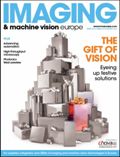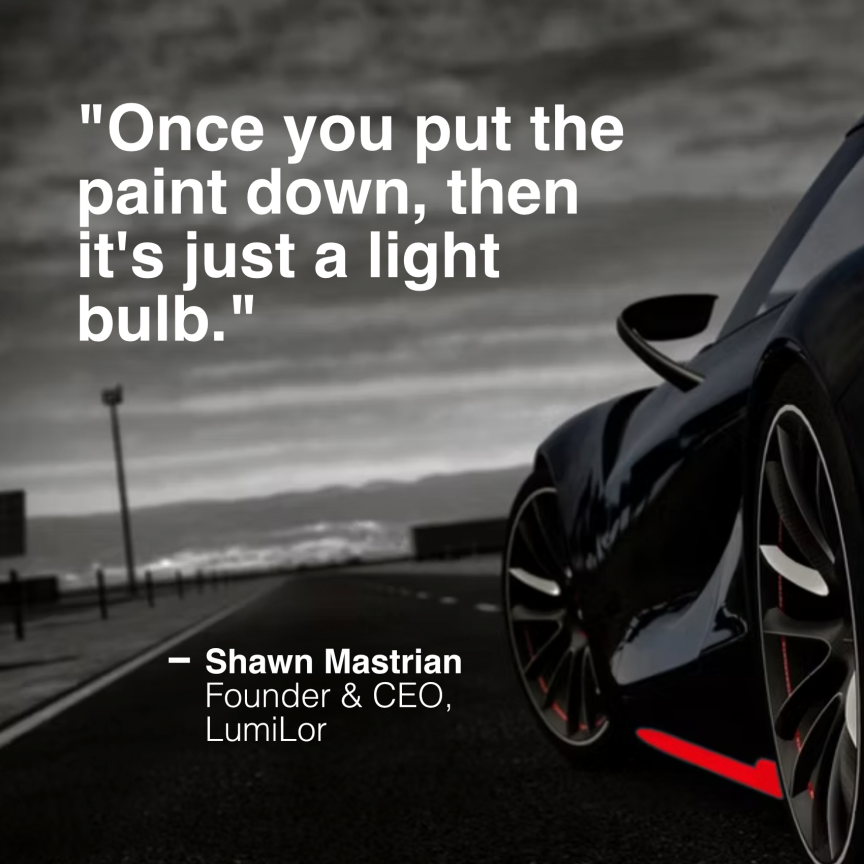Following on from his talk at Strategies in Light USA at the end of February, Dr Paul Rudy, SVP of business development at SoraaLaser, explains the latest developments in GaN laser diodes and laser pumped phosphor architectures, and discusses the merits of lasers compared to other lighting technologies
Recent progress in the integration of GaN laser diode pumped phosphors has enabled a new category of solid-state light sources that deliver advanced illumination effects in ultra-compact form factors. These droop-free light sources combine the benefits of solid-state illumination – such as minimal power consumption and long lifetime – with point-source-like high luminance, thereby enabling safe and incoherent directional output that has, up until now, only been possible with legacy technology. An example of laser light source architecture is shown in figure one: high optical power blue laser light is focused to a small spot on a phosphor and converted to high luminance white light.

Figure one: White light being generated by laser light sources
Blue laser diode progress
These novel laser lighting sources are enabled by rapid progress occurring in the area of GaN laser diodes. State-of-the-art blue laser diode designs are now providing optical power outputs in excess of three watts per device, 35 per cent electrical to optical efficiency, and lifetimes in excess of 10,000 hours. Moreover, these GaN laser diode devices output the light from an extremely small aperture, less than 50 microns wide by two microns tall. This is fundamentally possible because of the fact that laser diodes do not suffer droop in the same way that LEDs do.
Laser phosphor advantages over other sources
Using such an architecture shown in figure one, this high intensity output from the blue laser diodes allows the laser light to be focused to tiny spots on phosphors, generating a luminous output of 500 lumens from a few hundred microns in diameter. The resulting luminance is 10 to 100 times that of LEDs.
These types of high-luminance laser light sources offer unique advantages when compared to other lighting technologies, such as LEDs, OLEDs, and legacy sources. Halogen and metal halide sources can produce highly collimated directional beams at lower efficiency than LED sources. On the other hand, LEDs are high efficiency, but provide low luminance, and are therefore poor at creating beam angles below 10 degrees.

The LaserLight SMD featuring SoraaLaser’s semi-polar GaN laser technology
Laser light can provide the benefits of each. Specifically, when laser light components are assembled into collimated modules, and deliver beam angles of less than two degrees from miniature one-inch optic diameters, roughly one tenth the beam angle of LED sources is achieved. Additionally, analysis of the intensity gradients from these high-luminance sources showed that laser light exhibits ten times the gradient of LEDs, allowing high precision beam shaping. In addition to micro-spot lights, these novel laser light sources enable micro-luminaries, ultra-short throw modules, and waveguide-delivered remote sources, and are being adopted into architectural, entertainment, outdoor, and automotive lighting.
Looking to the future, dynamic laser lighting modules permit time-varying illumination capabilities, both spatially, and temporally. Such sources may enable the convergence of projection with lighting, dynamic beam shaping, beam tracking of objects or persons, and laser LiFi with data rates ten times that of LED-based LiFi. While applications for dynamic laser light sources are still emerging, they are expected to play a role in the future smart lighting and the internet of things (IoT).


